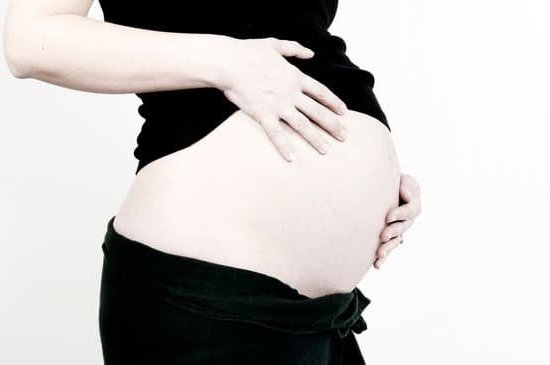What do pregnancy cramps feel like? Pregnancy can bring about a variety of new sensations and experiences for women, including the occurrence of cramps. Understanding what pregnancy cramps feel like is important for expectant mothers, as it can help them distinguish between normal discomfort and potential complications. In this article, we will explore the different aspects of pregnancy cramps, from early signs to managing them at home.
During the course of their pregnancy, many women experience cramping at various stages. These cramps can range from mild to severe and may be accompanied by other symptoms. It’s important for pregnant women to be able to recognize the characteristics of these cramps in order to determine whether they are normal or if they require medical attention.
In this article, we will delve into the early signs of pregnancy cramps and discuss the types of pregnancy cramps and their characteristics. Additionally, we will compare pregnancy cramps to menstrual cramps and explore the intensity and duration of pregnancy cramps. Understanding these aspects will empower pregnant women to navigate their pregnancies with confidence and knowledge about what to expect in terms of discomfort and pain.
Early Signs of Pregnancy Cramps
What Do They Feel Like?
Pregnancy cramps can feel different for every woman, but they are often described as a dull ache or mild twinges in the lower abdomen. Some women may also experience sharp pains or a feeling of tightness in the pelvic area.
In some cases, pregnancy cramps may be accompanied by light spotting or bleeding, which can cause added concern for expecting mothers. It is important to pay attention to any changes in the intensity or frequency of cramps and to communicate with a healthcare provider about any concerns.
Common Timing
Pregnancy cramps can occur at various points throughout pregnancy, but they are most commonly reported during the early stages of gestation. Women may experience cramping as a result of implantation, when the fertilized egg attaches to the uterine lining, or as the uterus begins to expand to accommodate the growing fetus. Understanding that these early signs of pregnancy cramps are normal can help alleviate anxiety for expecting mothers.
Management and Support
During early pregnancy, it is crucial for women experiencing cramps to stay well-hydrated and get plenty of rest. Engaging in gentle exercise and using relaxation techniques such as deep breathing may also help manage discomfort. Seeking emotional support from loved ones and speaking with a healthcare provider about any concerns can provide reassurance and guidance during this stage of pregnancy.
Types of Pregnancy Cramps and Their Characteristics
During pregnancy, it is common for women to experience cramps at various stages. Understanding the different types of pregnancy cramps and their characteristics can help expectant mothers differentiate between normal cramping and potential signs of a problem. Here are some of the most common types of pregnancy cramps and what they feel like:
- Round Ligament Pain: This type of cramp is often described as a sharp, shooting pain on one or both sides of the lower abdomen. Round ligament pain occurs as the uterus expands, causing the ligaments and muscles that support it to stretch and pull.
- Braxton Hicks Contractions: Often referred to as “practice contractions,” Braxton Hicks contractions are intermittent, usually painless tightenings of the uterus. Some women describe these cramps as feeling like their abdomen is getting tight or hard before relaxing again.
- Gas and Bloating: Pregnancy hormones can slow down digestion, leading to gas and bloating which can cause discomfort in the form of mild to moderate abdominal cramping.
Understanding the characteristics of each type of pregnancy cramp is essential for expectant mothers to be able to differentiate between normal discomfort and potentially concerning symptoms. It’s important to listen to your body and communicate any concerns with your healthcare provider.
Knowing what each type feels like can help pregnant women determine when it is necessary to seek medical attention or if it is something that can be managed at home with the right self-care strategies. Familiarizing yourself with these different types can also help alleviate unnecessary worry or anxiety during pregnancy.
Comparing Pregnancy Cramps to Menstrual Cramps
Many women may wonder what pregnancy cramps feel like, especially if they are experiencing them for the first time. It is common for pregnant women to compare pregnancy cramps to menstrual cramps, as they can have similar characteristics. However, there are some key differences between the two that can help women distinguish between the two types of cramps.
Pregnancy cramps can often feel like mild to moderate menstrual cramps, but they may also be accompanied by other sensations such as a dull ache in the lower abdomen or pelvic area. Some women describe pregnancy cramps as intermittent sharp pains or a feeling of pressure in the lower abdomen. These sensations are typically caused by the stretching and expanding of the uterus as the baby grows.
One major difference between pregnancy cramps and menstrual cramps is that pregnancy cramps are not related to the shedding of the uterine lining. Instead, they are usually associated with the changes that occur in the uterus and surrounding ligaments during pregnancy. Additionally, while menstrual cramps tend to occur right before or during a woman’s period, pregnancy cramps can occur at any point during pregnancy, particularly as the uterus continues to grow and expand.
| Pregnancy Cramp Characteristics | Menstrual Cramp Characteristics |
|---|---|
| Mild to moderate pain in lower abdomen | Moderate to severe pain in lower abdomen |
| Intermittent sharp pains or pressure | Dull, constant ache |
| Related to changes in uterus during pregnancy | Related to shedding of uterine lining |
The Intensity and Duration of Pregnancy Cramps
During pregnancy, it’s common for women to experience cramps at various stages. The intensity and duration of these cramps can vary widely, and it’s important for expectant mothers to understand what is considered normal and when they should seek medical attention.
Intensity of Pregnancy Cramps
Pregnancy cramps can range from mild discomfort to more intense pain. Many women describe the sensation as similar to menstrual cramps, while others may experience sharp, shooting pains. It’s important to pay attention to the intensity of the cramps and whether they are accompanied by other symptoms such as bleeding or unusual discharge.
Duration of Pregnancy Cramps
In general, pregnancy cramps can come and go throughout the entire gestation period. Early on in pregnancy, women may experience mild cramping as the uterus expands and adjusts to accommodate the growing baby. Later in pregnancy, Braxton Hicks contractions may cause periodic tightening and discomfort. It’s essential for pregnant women to monitor the duration of their cramps and note any patterns or changes.
When to Be Concerned
While some level of discomfort is common during pregnancy, there are certain signs that indicate a need for medical evaluation. If the intensity of the cramping becomes severe, if there is persistent pain, or if there is any vaginal bleeding associated with the cramps, it’s crucial to contact a healthcare provider immediately.
Understanding how intense pregnancy cramps can be and being mindful of their duration is an essential part of prenatal care. By staying informed about what is considered normal and when to seek help, expectant mothers can navigate this aspect of pregnancy with confidence and peace of mind.
When to Seek Medical Attention for Pregnancy Cramps
Pregnancy cramps can be a common occurrence during pregnancy, but it is important to know when these cramps may be a cause for concern and when to seek medical attention. While some cramping during pregnancy is normal, there are certain signs and symptoms that may indicate a more serious issue. It’s essential for pregnant women to recognize these signs to ensure the health and safety of both themselves and their babies.
One of the key factors in determining whether pregnancy cramps require medical attention is the severity of the pain. If the cramps are severe, persistent, or accompanied by other symptoms such as vaginal bleeding, fever, chills, or lightheadedness, it is crucial to seek immediate medical care. These could be signs of a potential complication such as an ectopic pregnancy or miscarriage.
Another important consideration is the location of the cramping. Cramping that is focused on one side of the abdomen or that feels unusual in any way should not be ignored. This could indicate an issue with the pregnancy such as an ovarian cyst or even a possible miscarriage.
It’s also important to pay attention to the timing of the cramping. If cramps occur later in pregnancy, particularly in the third trimester, they could be a sign of preterm labor. Any cramping experienced before 37 weeks gestation should prompt a call to your healthcare provider.
| Signs | Indications |
|---|---|
| Severe pain | Potential complication, such as ectopic pregnancy or miscarriage. |
| Focused on one side | Issue with pregnancy such as an ovarian cyst or possible miscarriage. |
| Late Occurrence | Possible sign of preterm labor. |
Tips for Managing Pregnancy Cramps at Home
Pregnancy cramps can be uncomfortable and sometimes even painful for expectant mothers. While it is important to consult your healthcare provider if you are experiencing severe or persistent cramping, there are some tips and techniques that you can try at home to manage pregnancy cramps. Here are some things to consider:
- Stay hydrated: Dehydration can exacerbate cramping, so make sure to drink plenty of water throughout the day.
- Get regular exercise: Gentle exercise, such as walking or prenatal yoga, can help alleviate muscle tension and reduce the occurrence of cramps.
- Practice good posture: Maintaining proper posture can help alleviate the strain on your back and abdominal muscles, which may contribute to cramping.
In addition to these general tips, there are specific techniques that may provide relief from pregnancy cramps. Pregnant women might consider trying the following strategies:
- Use a heating pad: Applying a warm compress to the lower abdomen can help relax muscles and alleviate discomfort associated with cramping.
- Elevate your legs: Lie down and elevate your legs with pillows to improve circulation and reduce swelling, which may in turn help alleviate cramps.
- Take a warm bath: Soaking in a warm bath can help relax tense muscles and provide temporary relief from pregnancy cramps.
It is important to remember that every woman’s experience with pregnancy is unique. What works for one woman may not work for another, so it is essential to listen closely to your body and consult with your healthcare provider for personalized advice on managing pregnancy cramps.
Conclusion
In conclusion, understanding and managing pregnancy cramps is an essential aspect of prenatal care for expectant mothers. Pregnancy cramps are a common and often uncomfortable experience during pregnancy, but being informed about the different types, intensity, and duration of these cramps can help alleviate anxiety and concern.
By recognizing the early signs of pregnancy cramps, comparing them to menstrual cramps, and learning when to seek medical attention, pregnant women can feel empowered to take control of their health during this important time in their lives.
It is important for pregnant women to remember that not all pregnancy cramps are cause for alarm. Many women experience mild to moderate cramping throughout their pregnancies as the uterus expands and the body undergoes significant changes.
However, it is crucial to differentiate between normal pregnancy cramps and those that may indicate a potential problem. Being aware of the characteristics of different types of pregnancy cramps can provide insight into whether they are typical discomforts or possible warning signs that require medical attention.
By discussing any concerns about pregnancy cramps with a healthcare provider, seeking guidance on managing pain at home through gentle exercise or relaxation techniques, and being attentive to any unusual symptoms or changes in the intensity or frequency of cramps can greatly contribute to a more confident and comfortable pregnancy experience. Ultimately, empowering pregnant women with knowledge about what pregnancy cramps feel like and how to manage them can lead to better overall well-being for both mother and baby.
Frequently Asked Questions
What Do Earliest Pregnancy Cramps Feel Like?
Early pregnancy cramps can feel similar to menstrual cramps, as they are often described as a dull ache or mild discomfort in the lower abdomen. Some women may also experience some light spotting with these cramps.
Can You Tell the Difference Between Cramps and Pregnancy Cramps?
It can be challenging to differentiate between regular cramps and pregnancy cramps, especially in the early stages. However, pregnancy cramps are often milder and may be accompanied by other symptoms such as breast tenderness, nausea, or a missed period.
What Does Your Stomach Feel Like in Early Pregnancy?
In early pregnancy, some women describe their stomach feeling bloated or full, similar to the way it feels before their period starts. Others may experience slight twinges or pulling sensations in their lower abdomen as the uterus begins to expand to accommodate the growing fetus.

Welcome to my fertility blog. This is a space where I will be sharing my experiences as I navigate through the world of fertility treatments, as well as provide information and resources about fertility and pregnancy.





